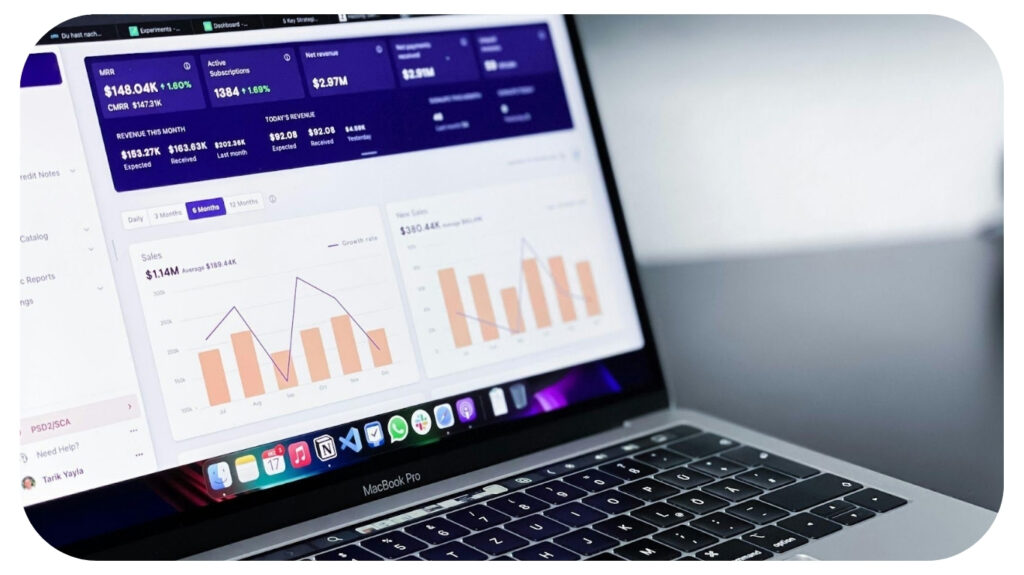Omar Marar on Optimizing Supply Chain Efficiency with Data Analytics

Effective supply chain management is at the heart of any successful business that deals with production, logistics, or distribution. It ensures goods move seamlessly from suppliers to customers while controlling costs. In recent years, data analytics has become a transformative tool, offering companies deeper insights and helping them streamline operations. By interpreting vast amounts of information, businesses can uncover patterns, reduce inefficiencies, and anticipate risks more effectively. Omar Marar, a data analytics expert, explores why understanding how data analytics can optimize supply chains is more important than ever.
The Role of Data in Modern Supply Chains
Every step in a supply chain generates data, whether it’s inventory levels, transit times, or customer demands. Traditionally, businesses relied on historical trends or manual monitoring to make decisions. Today, advanced tools analyze this data in real-time, enabling precise forecasting and decision-making. The shift from reactive to proactive management has created a competitive advantage for companies that harness analytical insights.
“Data provides a clear picture of supply chain performance,” says Marar. “For example, by analyzing transportation data, businesses can identify bottlenecks that slow delivery or drive up costs. Similarly, monitoring inventory levels helps prevent overstocking or shortages, reducing both waste and missed sales opportunities.”
When used effectively, data doesn’t just answer the “what happened” questions—it predicts what’s likely to happen next.
Predictive analytics uses algorithms and statistical models to forecast outcomes based on historical data. In supply chain management, it helps businesses avoid disruptions and respond to changes quickly. These tools analyze risks that might impact operations, such as equipment failures, demand spikes, or supplier delays.
For instance, some companies use predictive models to monitor weather patterns, ensuring shipments are rerouted during storms to avoid delivery delays. Retailers can use this technology to predict product demand more accurately, stocking the right amount of inventory for busy seasons while minimizing excess stock during slower periods. This reduces costs but also improves customer satisfaction by ensuring products are always available when needed.
Improving Efficiency Through Real-Time Tracking
Real-time tracking involves monitoring shipments, inventory, and assets as events unfold. This capability gives supply chain managers full visibility into their operations, allowing them to address issues as they arise. If a delivery vehicle encounters traffic, real-time tracking can pinpoint its location, notify the receiver, and identify alternate routes to avoid further delays.
Tracking also brings transparency to global supply chains by providing up-to-the-minute updates on shipments moving across borders or through multiple carriers. This level of visibility is invaluable in industries such as manufacturing, where delays in raw materials can halt production. By keeping all parties informed, real-time tracking reduces uncertainty and fosters stronger relationships between suppliers, manufacturers, and clients.
Inventory management is one of the most challenging aspects of running a smooth supply chain. Excess inventory ties up capital and increases storage costs, while shortages lead to missed sales and customer dissatisfaction. Data analytics bridges this gap by offering insights that allow businesses to maintain just the right amount of inventory.
Advanced systems analyze purchasing patterns, seasonality, and supplier lead times to establish optimal inventory levels. With this information, businesses can automate restocking processes, ensuring shelves are replenished before they run empty. Additionally, data tools help managers identify slow-moving products so they can adjust pricing or promotional strategies to boost sales. The result is a more balanced and efficient inventory system that supports overall business goals.
Enhancing Supplier Relationships
“Strong relationships with suppliers are essential for a well-functioning supply chain,” says Marar. “Data analytics improves supplier management by analyzing key performance indicators such as delivery times, product quality, and pricing trends.”
These metrics provide an objective way to evaluate supplier performance, helping businesses decide whether to renegotiate contracts or seek alternative partners. Additionally, analytics tools help companies plan their sourcing strategies. For example, they can determine which suppliers offer the best combination of cost, quality, and reliability based on historical data.
This ensures businesses work with suppliers that contribute positively to their bottom line. Sharing data openly with suppliers also enhances collaboration. For instance, providing suppliers with demand forecasts allows them to prepare in advance and avoid shipment delays. In turn, this creates a more reliable and resilient supply chain.
Reducing Costs and Anticipating Risks in a Supply Chain
Cost control remains a key focus for supply chain managers. Data analytics identifies areas where money is being wasted, from excessive transportation expenses to inefficient warehouse layouts. Detailed insights allow managers to pinpoint problem areas and implement cost-saving measures without compromising performance.
Route optimization tools calculate the most efficient paths for delivery vehicles, saving fuel and reducing emissions. In warehouses, analytics can identify traffic patterns and recommend more effective layouts to speed up order picking and packing processes. Small adjustments in these areas can lead to significant savings over time.
Data tools help businesses negotiate better rates with shipping companies or suppliers by demonstrating clear evidence of performance levels or alternative options. With a data-driven approach, companies can reduce costs while maintaining high service standards.
No supply chain is immune to risks, whether they stem from natural disasters, political instability, or market fluctuations. Data analytics helps businesses prepare for these challenges by identifying vulnerabilities in advance. Early warning systems, powered by machine learning algorithms, monitor external factors like weather reports or global news to predict potential disruptions.
A company sourcing material from a region prone to hurricanes can use analytics to determine alternative suppliers or stockpile inventory during high-risk seasons. Similarly, businesses can mitigate risks from fluctuating demand by developing contingency plans based on data-driven models. Proactive strategies like these minimize downtime and protect revenue during unforeseen events.
Building Sustainable Supply Chains with Analytics
“Sustainability has become a top priority for businesses worldwide, and supply chains are no exception,” says Omar Marar.
Data analytics supports greener initiatives by tracking energy usage, carbon emissions, and waste across the supply chain. These insights inform more sustainable practices, such as consolidating shipments or adopting eco-friendly packaging. Companies can use analytics to evaluate their providers’ environmental impact, ensuring they work with partners committed to sustainability.
Additionally, tools that monitor energy usage in warehouses or manufacturing plants allow managers to identify opportunities for reduction. By prioritizing sustainability, businesses meet regulatory requirements while enhancing their reputation among environmentally conscious consumers.
Incorporating data analytics into supply chain management has transformed the way businesses operate. From predictive forecasting to real-time tracking, these tools provide actionable insights that enhance efficiency, reduce costs, and mitigate risks.
Companies that embrace data-driven strategies gain a significant edge in today’s competitive market by responding faster to challenges, improving relationships with suppliers, and delivering exceptional service to customers.
As supply chains continue to grow in complexity, the role of data analytics will only become more significant. Businesses that invest in these technologies now are better positioned to navigate future changes, build resilience, and achieve long-term success.
Recommended For You
How to Stock Your Restaurant?
Most Inside
Most Inside offers high-quality recommendations and valuable updates to enhance all aspects of your life, providing premium guidance and enriching experiences.




